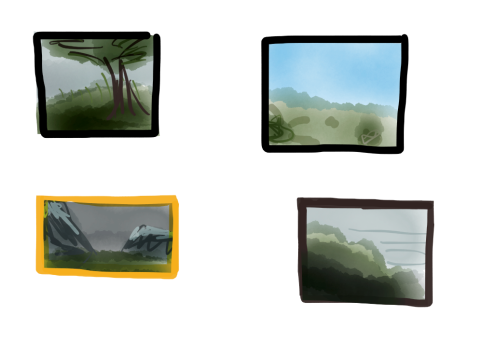Background:
Art galleries are generally arranged by either genre (for example, “portraits” or “landscapes”) or a period in history (e.g. “Renaissance Italy, 1350–1500”).
The issue:
This traditional organizational scheme results in dozens of similar works in close proximity, which leads to the following problem: after a person has seen ten masterpiece portraits of Venetian nobles, an eleventh one is not going to make an impression.
All the pieces all start to look the same!
Proposal:
As an alternative to period- or genre-based organization, artwork may be grouped together by either:
- Color (Example: a gallery of only red paintings, from various artistic periods.)
- Very specific subject matter (Example: a gallery of only paintings of horses, from across thousands of years.)

Fig 1: In this example, the paintings are all mostly red, but the left painting is a work of abstract art, the middle one is a French Impressionist painting, and the right one is a piece of propaganda art. As you can no doubt clearly tell from these masterful illustrations.

Fig 2: An example of what this might look like with art from different eras that just happen to have a reddish hue. These would all go in a gallery together, despite the unrelated subjects and time periods.
Fig 3: An example of similar subject matter over thousands of years.
Conclusion:
By varying the art style, viewers of these fine pieces of art will take longer to become acclimated to a specific technique and era, so they will continue to appreciate each new piece on its own rather than becoming instantly bored with it (having already seen 15 similar paintings).

Fig 4: As seen here, sometimes this organizational scheme would not actually change anything. For example, these landscape paintings all have approximately the same subject matter and coloration, so they wouldn’t be separated out by a color / subject classification scheme, and will be grouped together no matter what.
PROS: None! You should rearrange your art museum like this—right now!
CONS: It’s so good that it will probably put curators out of business, since they’ll have nothing left to do once the paintings are arranged in this fashion.


You must be logged in to post a comment.